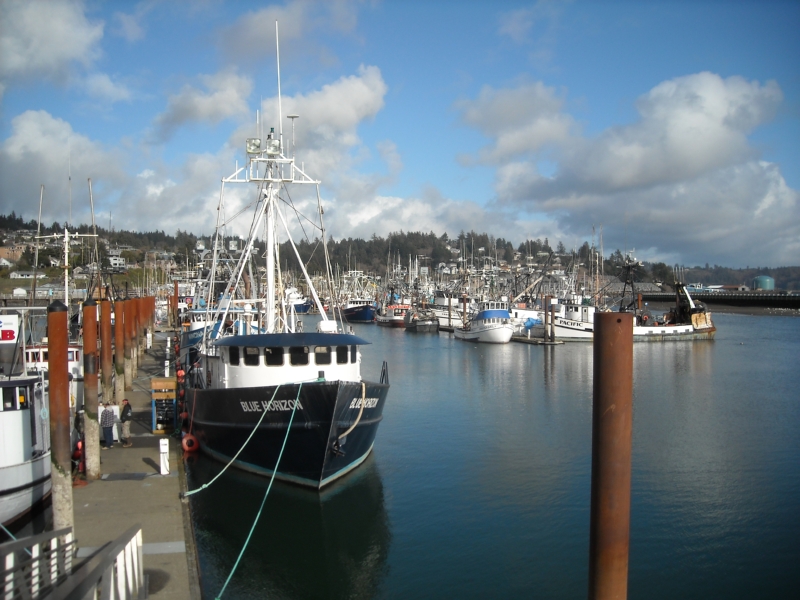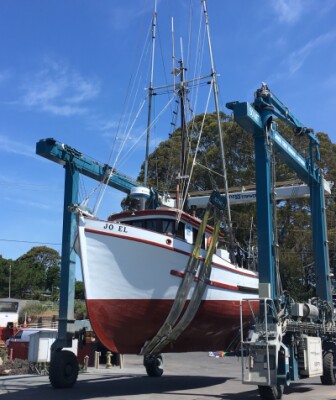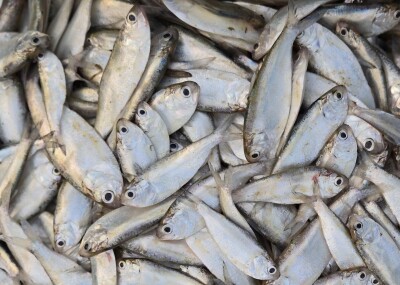The fishing industry responded to the presidential roundtable with gratitude for the spotlight and a push for help with other issues. Here’s our Top 10 as compiled from feedback around the country.
Pandemic Assistance
As of mid-June, fishermen had not seen funds filter down from the CARES Act through Commerce to their state agencies and their businesses. Though the act was passed in March, with guidelines for disbursement issued by Commerce in May, NMFS predicted a mid-July date for approval of state funding plans, which would predate any payments. Controversial allocations trough the Paycheck Protection Program and low caps on the Small Business Administration’s Economic Injury Disaster Loans also hampered relief to the industry, which is primarily comprised of small business owners, independent operators and contract workers.
Wind Power
“Offshore wind development has been fast-tracked at the peril of commercial fishermen,” said Patrice McCarron, executive director of the Maine Lobstermen’s Association. “The Bureau of Ocean Energy Management has established a task force to facilitate and plan offshore wind development in the Gulf of Maine. Although this will directly impact the livelihoods of commercial fishermen, they are not represented on the task force.
"Fishermen can only make their living from the ocean, and the proposed development of floating turbines will result in the closure of fishing areas. In addition, the impacts of offshore wind development on ocean ecology and commercial fishing are poorly understood. Fishermen must be fairly represented in this fragmented process. Data must be improved to understand how these future developments will impact commercial fishing as well as the marine ecosystem.”
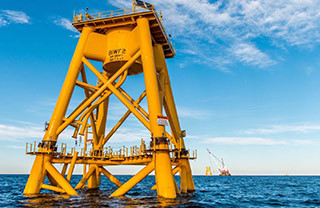
Habitat Protection
The U.S. Army Corps of Engineers was nearing completion of its environmental review for the proposed Pebble Mine at the headwaters of Alaska’s Bristol Bay as we went to press on this issue in mid-June. At the same time, Bristol Bay’s commercial fishermen, seafood processors, and residents were preparing for the return of a forecasted 49 million sockeye salmon. A final permitting decision is expected to drop as soon as 30 days after the review, around the peak of the fishing season, when Bristol Bay’s fishermen and residents will be occupied with fishing and preoccupied by an added layer of covid-19 prevention practices.
“It is unconscionable that, despite overwhelming comments and outcry requesting an extension and revision to the Pebble Mine permitting process, the Army Corps has continued to rush its environmental review and aims to release a final permitting decision while Bristol Bay grapples with the challenges of harvesting, processing and supplying half the world’s wild sockeye salmon during a global pandemic,” said Katherine Carscallen, Bristol Bay resident and executive director for Commercial Fishermen for Bristol Bay. “We look to Alaska’s senators for their leadership and implore the EPA to use its authority under the Clean Water Act to veto Pebble’s permit. The EPA’s own science and comment letters to the Army Corps show that this project poses an unacceptable risk to our country’s greatest remaining wild salmon runs.”
Marketing
“If the U.S. government is going to support and fund a large, planned increase in domestic aquaculture production, there must be some sort of specific support for domestic wild seafood products that will come under increased competition from this new and expanded domestic aquaculture production,” said Bruce Schactler, a commercial fisherman, industry advocate and NF Highliner, based in Kodiak, Alaska, referring to the president’s executive order in May that promotes the production of offshore aquaculture.
“The Farm Bill,” Schactler added, “provides hundreds of millions of dollars per year for the exclusive use of the U.S. Agriculture industry to subsidize technology, marketing, infrastructure, research, education, training, price supports of various kinds, and generous support for the young farmers and ranchers that will carry on this critical industry. The U.S. seafood industry has no such support program, although it is not for lack of trying.”
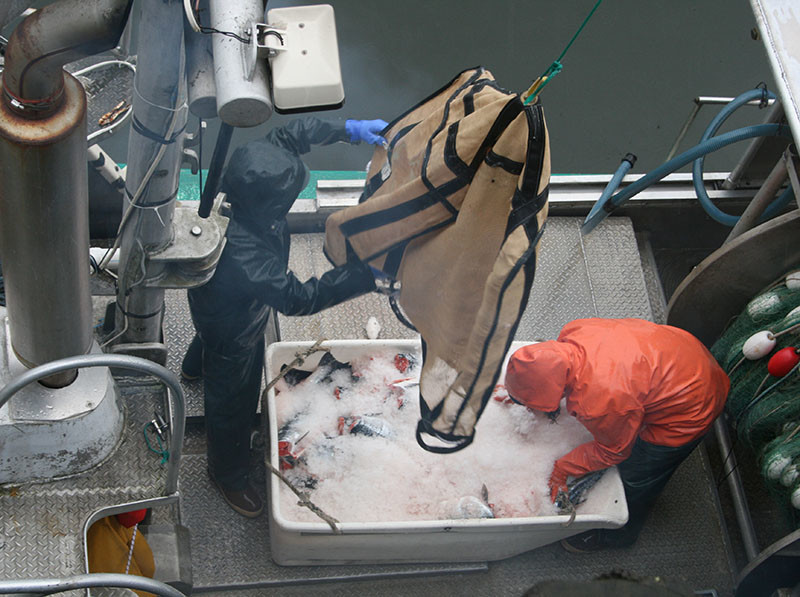
Trade Aid
Though the promise of a Seafood Trade Task Force and the implementation of the Seafood Import Monitoring Program offer some promise of relief for U.S. fisheries and dealers competing with cheap foreign imports in our own markets and looking for new opportunities overseas, the need for federal assistance with global trade restrictions through specific agreements is still paramount for many U.S. fisheries.
“Tariffs do not come and go overnight,” said Annie Tselikis, executive director of the Maine Lobster Dealers’ Association. “Many of us in the industry have been advocating for fair access to foreign markets for a long time. In order for tariffs to be reduced or eliminated, there is a process of negotiation and diplomacy, and each negotiating partner needs to be a willing and fair participant in that process.”
Marine Mammals
New England fishermen aren’t the only ones worried about whales and working to improve gear, fishing methods and management to avoid them. The West Coast Dungeness fleet has worked with other stakeholders for several years in a gear working group.
But on the flipside, the Marine Mammal Protection Act establishes permanent protocol for species, like sea lions, that have rebounded to the point of creating a nuisance and preying excessively on critical species, like Pacific salmon.
“Marine mammal stocks (California sea lions, in particular) should lose protections when their populations reach a certain level, whether that is carrying capacity or the Marine Mammal Protection Act’s Optimal Sustainable Population,” said Mike Conroy, executive director of the Pacific Coast Federation of Fishermen’s Associations. “They throw off ecosystem balance and are in direct competition with other ESA-listed species (Southern Resident killer whales, for example) for limited amounts of food.”
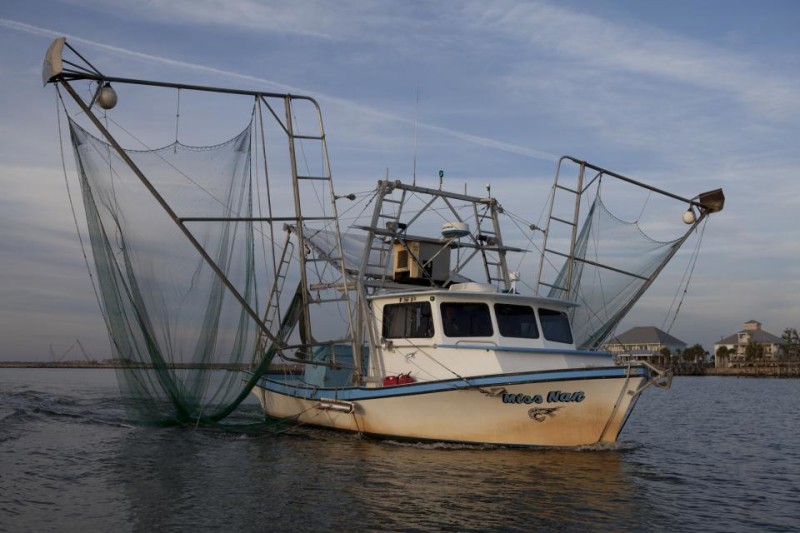
Recovery Response
This includes everything from disaster funds to increased flexibility, which would provide means for the industry to manage disaster recovery. Most fishermen will tell you: They don’t want handouts, they just want to work. Federal aid can be helpful, but it takes so long to reach the fleets that many businesses go bust waiting for relief.
The state of Mississippi, for example, was awarded $11 million for a 2011 disaster declaration, but fishermen have seen very little of those funds so far.
“It was probably about 2015-16 before we started seeing money from that disaster declaration. And they’re still spending that money, almost 10 years later,” said Ryan Bradley, executive director of Mississippi Commercial Fisheries United and a 2018 NF Highliner. “Oystermen and crab fishermen and seafood dealers have received about 15 percent” of that $11 million, so far.
Better Data
“Whether that means more funding for science center activities or closer coordination with fishermen or just listening to what they are reporting,” said Conroy. “Fishermen have knowledge, are on the water far more often than the science folks, observe changes related to ocean conditions and fish populations, assist in understanding fish movement by collaborating with different organizations (e.g., tagging programs).
“One example out here is the stock assessments for Pacific sardine. They are based on surveys taken on large NOAA ships which can’t access the nearshore waters (typically those less than 25 fathoms). Coincidentally, that is prime habitat for sardine. So the stock assessments keep showing a decline in sardine biomass, while fishermen are reporting (with documentation) increasing numbers of sardine in the nearshore. Because the fishermen’s observations are anecdotal, they carry no weight.”
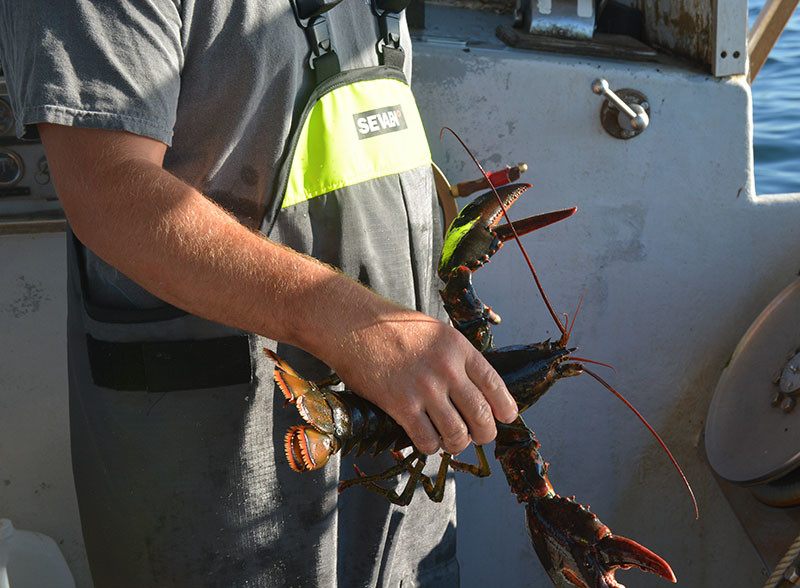
Infrastructure and Access
“Feeding fish to the community requires a new commitment and approach to the food supply chain,” said Pete Halmay, commercial fisherman and president of the San Diego Fishermen’s Working Group. “Without improved infrastructure and better access to resources, the promise of fresh, sustainable , local fish cannot be fulfilled.”
“This includes dredging, NOAA weather buoys that actually work, shoreside off-loading equipment and product storage, dockside land space for gear storage and/or office space, etc.,” said Conroy. “Ensure protections can be put in place to protect the future access to private unloading stations.”
All of these (and more) add up to the culminating priority for the industry.
Recognition of the Value of U.S. Commercial Fisheries
Looking for more?
- Our FREE online membership offers access to our monthly digital edition, free reports, free quarterly magazine and discussion forums.
- For $14.95 a year, get all that plus access to our digital issue archives.
- For $15.95 a year, get all that plus the print edition of National Fisherman.





